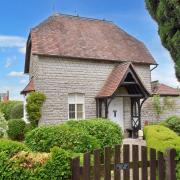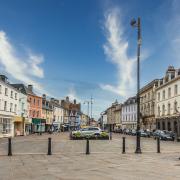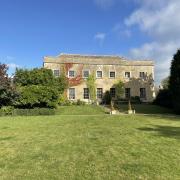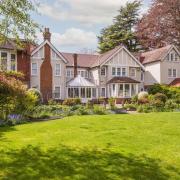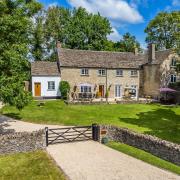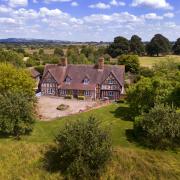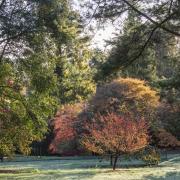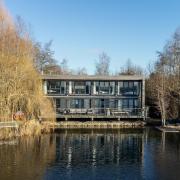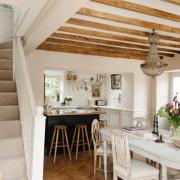When Hugh and Rosie Tollemache first moved to Hyde Mill in 2001, neither could have imagined the miraculous way in which their wildflower meadow would slowly emerge from the unscathed loamy wet earth by the river which runs through their garden, or just how important this would turn out to be. For this is not only the story of how they created a wildflower meadow from what was once a school playing field but about a meadow by the river that is so rare and special that not only is it, alongside Highgrove, one of two Coronation meadows in Gloucestershire, but it has also been hailed as one of the top five flower-rich meadows in the whole country.

It all began when the couple arrived and had decisions to make about their garden. Their first move was to stop the weekly mowing which had been going on for 50 years after noticing the leaves of a spotted orchid cut adrift from the plant before it had time to flower. Their reward that first summer was a profusion of common spotted orchids containing a mixture of dark pink-petalled ones amidst others with their white flowers spotted with red markings. More were soon to follow, a further six different orchid varieties to be exact; the beautiful early purple orchid; common twayblade with its small yellow-green flowers and hairy, glandular stem; early marsh orchid, which shows up to 15 -30 pale pink flowers per stem. The bee orchid also appeared, this looks like a bee taking nectar from a pure white flower, as did the spectacular pyramidal orchid. The Tollemaches' starting strategy had worked.

‘We have learnt that the trick with wildflower meadows is to interfere as little as possible,' explains Hugh. 'No pesticides, no herbicides and no nitrogen. It’s also essential to wait until late July or August before cutting as by that time the seeds have had time to set. Essentially don’t do anything to your wildflower area after March and before July.'
Within only a few years the range of wildflower species in their river meadow expanded to include a host of well-known and celebrated wildflowers: meadowsweet, reputed to have been used to ‘sweeten mead’; great burnet, a dramatic plant with large oval red-black seed heads; devil’s-bit scabious, at one time thought to help heal scabies, and selfheal. Tufted vetch too, with its blue flower and serrated leaves, together with betony which has a striking purple flower, and oxeye daisy. The river wildflower meadow then started to display other, rarer wildflower species including milkwort, recognizable by its small blue flowers; bugle, yellow tormentil and ragged robin, which has pink frayed flowers; followed only three years ago by purple loosestrife, all of these contributing to the 162 wildflowers and grasses which have so far been counted in the meadow.

As a result of all the plant life, unusual insects have found their way to Hyde Mill as well, with the rarer ones often photographed by Rosie. They include the delicate demoiselle damselfly, which comes to the meadow in June. Look out for the male with his bluish black wings and bright blue body which glitters in the sunlight like a jewel. The early orange tip butterfly and numerous grasshoppers and moths are also now commonplace in the meadow, together with a rising number of bees, butterflies, swifts, falcons and owls.
Hyde Mill was first named as one of the country’s precious Coronation meadows in 2013. The idea behind creating these special areas came about in response to the 97% decline in the country’s flower-rich meadows. His Majesty King Charles III suggested the idea of selecting at least one original flower rich meadow in every county to act as a reservoir for the donation of seed to suitable meadows nearby as a way of helping to double such sites around the country. This initiative was highlighted by the charity Plantlife in its ‘Our Vanishing Flora’ project and backed by The Wildlife Trust and The Rare Breeds Survival Trust. As a result of this, Hyde Mill’s own 13-acre Coronation meadow has now enabled the growth of a further 25 acres of richly diverse flowers by the spreading of green hay over to a new recipient field.

‘It is remarkable that our meadow with its ancient seed bank has survived so many decades of either being cut for hay, trampled on by schoolchildren playing rugby and grazed on by horses but nevertheless managed to return so quickly to its original diversity without the interference of humans importing seeds or plants from elsewhere.’ Hugh concludes.
To visit the Hyde Mill wildflower meadow, park at Bourton-on-the Water or Lower Swell and take the Monarch Way footpath which runs through the meadow. There is no parking at Hyde Mill.
NEXT TIME: What to expect from your meadow in the first year.





